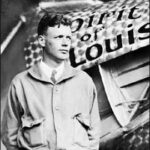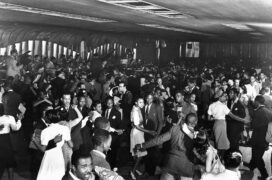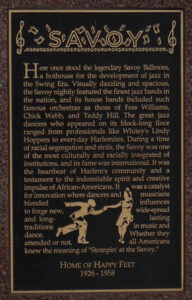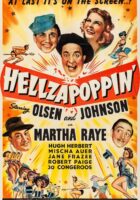Blog
The Lindy Hop: all power to improvisation

THE LINDY HOP AND ITS ORIGINS
The Lindbergh leap and the parallel one of 'Shorty' Snowden: stories of courage, invention, talent. Stories of dreams that turned into the freestyle of an epoch-making dance.
The Lindy Hop can be defined in two words as the 'improvisational dance' par excellence. Thus following the very path of its definitive name: which derives, as we have already mentioned, from aviation pioneer Charles Lindbergh's famous 'jump' (hop) from one side of the Atlantic to the other, from New York to Paris, a legendary feat dating back to 1927.

"LINDY" AND THE LITTLE GUY
Lindbergh, abbreviated to Lindy, was a postal pilot and remained in the saddle of his 'Spirit of St.Louis' aeroplane for thirty-three hours and a handful of minutes between 20 and 21 May, the first man to attempt the solo crossing from the States to Europe and to land unscathed in the French capital. The plane's name was a tribute to the city of St. Louis, the most generous in raising the funds needed to build that canvas-covered wooden device. As in certain paradoxical comic strips, the aircraft had been lightened as much as possible to make room for the largest possible fuel tank: throw this away, throw this away, even the radio to maintain communication had been left on the ground.
Lindbergh appeared in the clouds of Paris with no warning... It took them a while to understand and carry him off in triumph! What, then, does Lindbergh have to do with swing dancing? And how did the most practised of them end up taking its name? Very simple. In those days there is a little black man from the slums of New York who dances to the tune of God to the new rhythms that are taking hold all over Harlem. His name is George 'Shorty' Snowden, no one knows what he does for a living, but soon he will become, still very young, a professional dancer, dragging an entire generation behind him. It is he who 'opens' the couple, invents the so-called break-away: she, the dancer, moves away, seems to elude him; he, the leader, picks her up without ever losing time, improvising steps and unprecedented movements. People watch, imitate, go crazy. They throw coins at him so that he continues, so that he never stops. So one fine day a society journalist, drawn in by the scale of the phenomenon, asks him point-blank after one of these exhausting, exciting marathons: "What kind of dance is this?" What we don't know for sure is whether 'Shorty's' reply was prepared or, more likely, given the chap, improvised on the spot: 'It's called the Lindy Hop, like the Lindbergh jump'. Which, incidentally, was on the front page of every New York newspaper in those days.
HEARING THE MUSIC AND REFLECTING IT
Lindy, therefore, developed in the late 1920s in Harlem, and remained in vogue for about twenty years. It is the most authentic swing dance, because it is based on rhythm and syncopation, on the 'pulse' of early jazz music. This is no small distinction, since it differentiates it from later dances such as Rock 'n Roll, Rockabilly, Jive, and Boogie, all of which are based on other musical genres. Just like Jazz music, Lindy Hop is, as mentioned at the beginning, based on the highest degree of improvisation. Not all steps are defined or choreographed, indeed the best dancers are those who know how to 'reflect' the music, shaping it to their own steps, exactly as 'Shorty' did.
THE FREE RHYTHM OF THE FOLLOWERS
Freedom of expression, one would say today, extended to the followers, never locked into the movement pre-defined by the dancer, but with their own space and time within the dance to improvise movements and styles. A 'call and response' relationship is thus generated in the couple, a true improvised dialogue. A continuous laboratory of research of one's own Swing.
EVERYONE WITH EVERYONE, THE SOCIAL DANCE IS BORN
But Lindy is above all a social dance, as opposed to standardised and institutionalised ballroom dancing. Level matters little and it is quite normal for the woman to ask the man to dance, the constant change of partners almost a talisman for improvement. It should not be forgotten, moreover, that historically its spread also helped to break down racial barriers, making it a cultural phenomenon. Without forgetting merit. In his New York Mecca, the Savoy Ballroom, in the heart of Harlem, which could accommodate up to five thousand people, blacks and whites together, engaged in endless marathons, and where two orchestras per night performed on opposing stages, there was even a corner, the Cats' Corner, where they challenged each other in the creation of unprecedented steps, a workshop open to the talented.

A PLAQUE IN MEMORY OF THE TEMPLE
The Savoy closed its doors in 1958, after young people's dancing tastes had changed for good, and was later demolished. In memory of the roaring years there is now only a memorial plaque, belatedly erected in 2002 at 140th and 141st Streets, right where the Lindy temple once stood.

DREAMING CALIFORNIA
The transmigration of the Lindy Hop to the West Coast of the United States also started from the Savoy. First of all because of the spread of radio. The music of those dance marathons began to be broadcast nationwide. Thus, while in New York the night was advancing, in California it was still early afternoon, and this time lag ended up bringing the young people of the West closer to the new fashions, promoting the notoriety of the Lindy. But it was a very young Savoy dancer, Dean Collins (of Jewish origin and real name Saul Cohen) born in Ohio in 1917 and exploding at the age of 18, who exported the Lindy to Los Angeles in the mid-1930s.
HOLLYWOOD COMES, HELLZAPOPPIN
A revisited and modified Lindy that changed the Savoy Style into West Coast Swing (also known as Hollywood Swing). A new style, in particular of posture, made of more elegant and less 'wild' movements, which soon landed on the big screen, benefiting from the additional boost of cinema. The choreographies and dance scenes that Dean Collins himself devised and performed became the backbone of such celebrated musicals as Let's Make Music, starring Bob Crosby in '39, Dance Hall and, above all, the absolute masterpiece Hellzapoppin of 1941, the most famous full-length danced Swing-themed film. Starring the dance troupe founded by Herbert White, aka Whitey, aka Whitey's Lindy Hopper, which successfully performed around the world, the film had no well-defined plot but, through a series of gags depicted dancing the Lindy Hop, managed to entertain and capture the attention of the general public. Improvisation style, needless to say!

About the author


